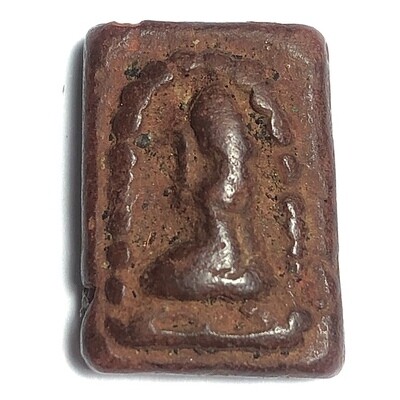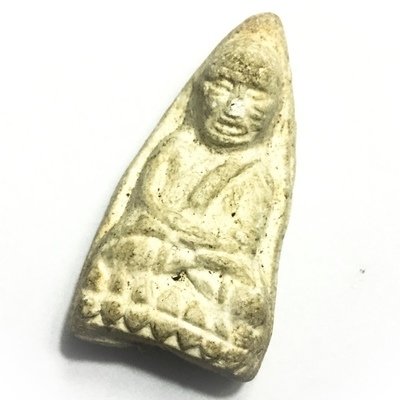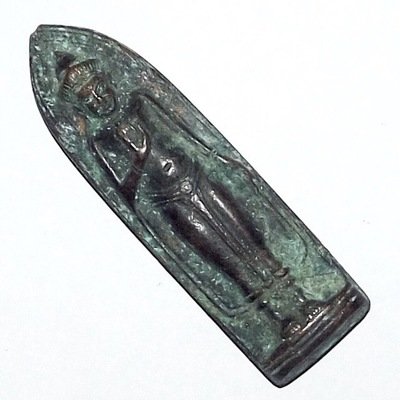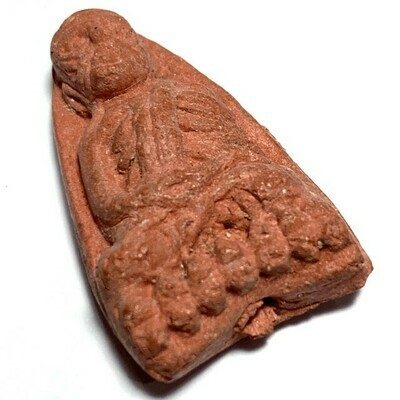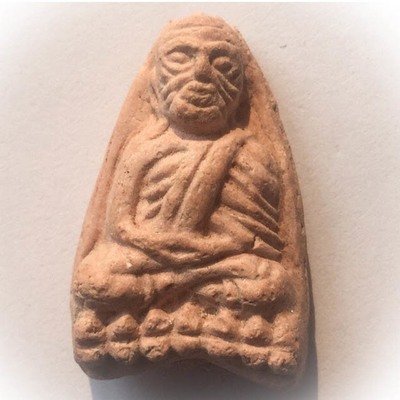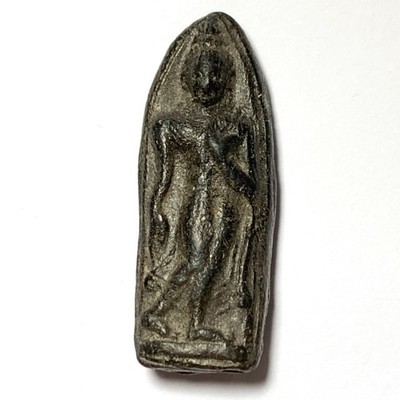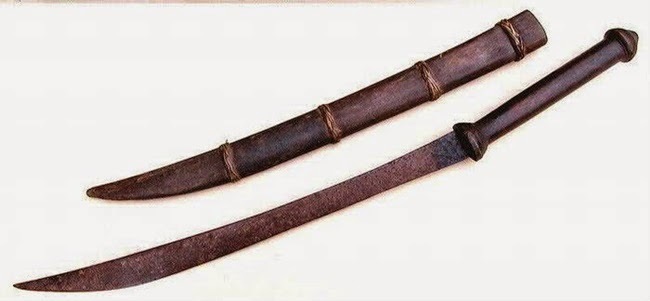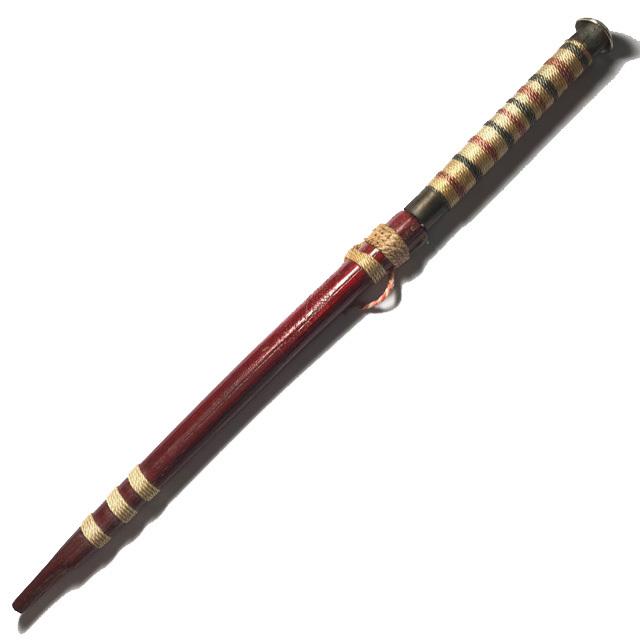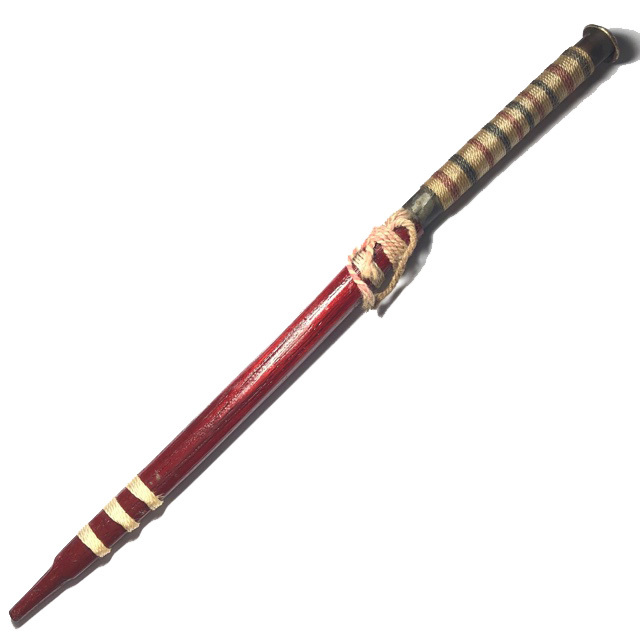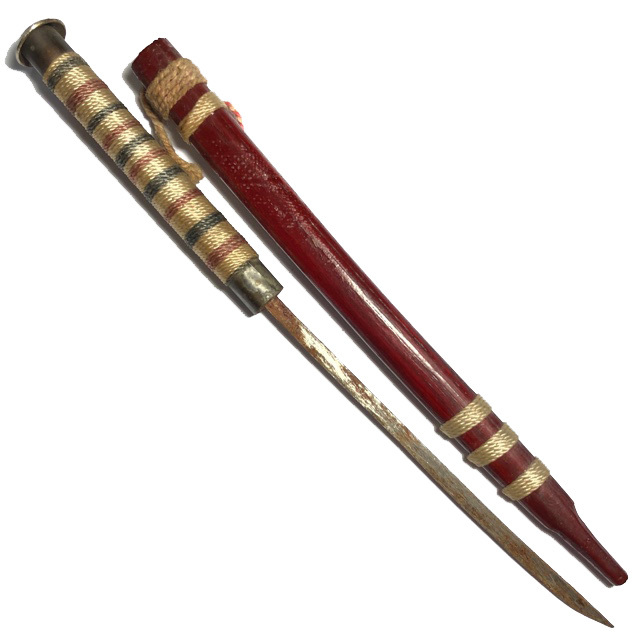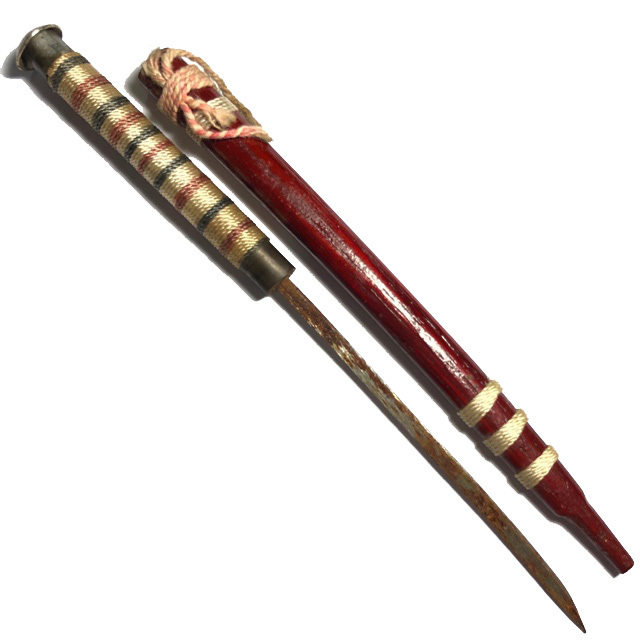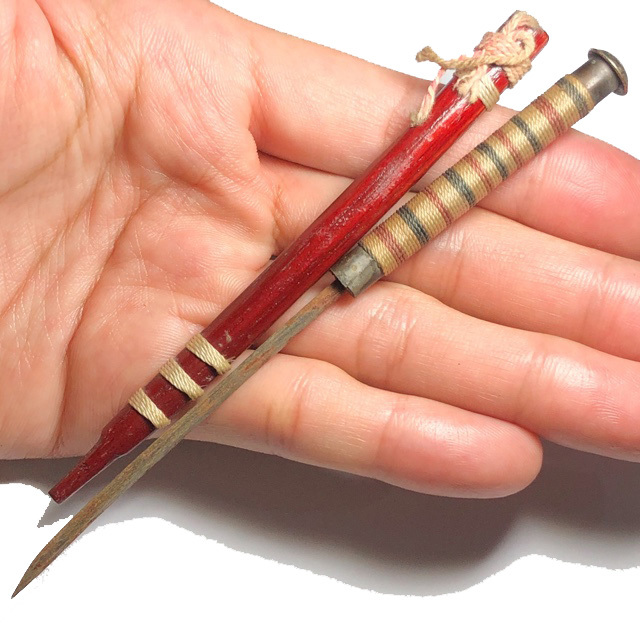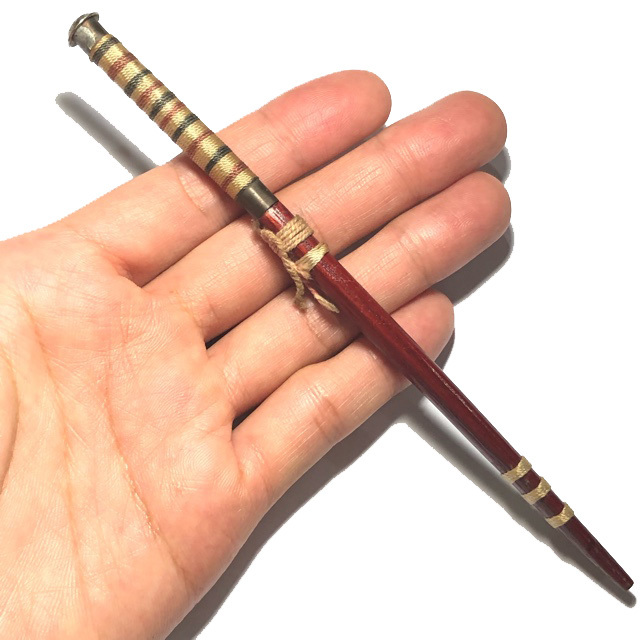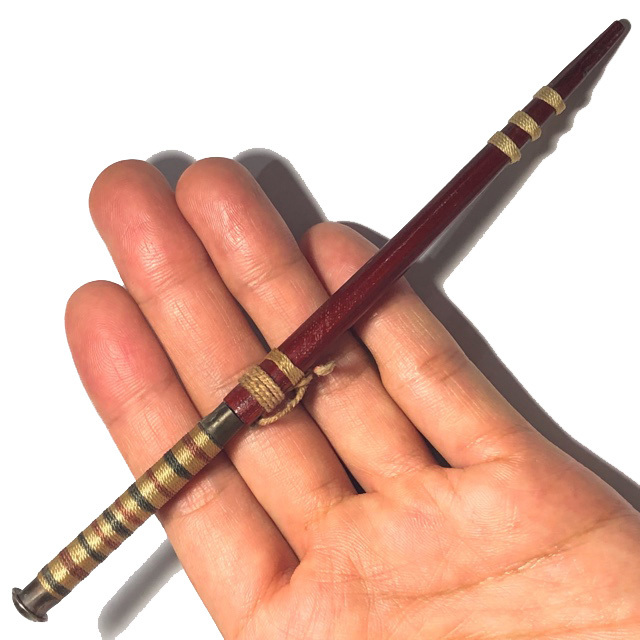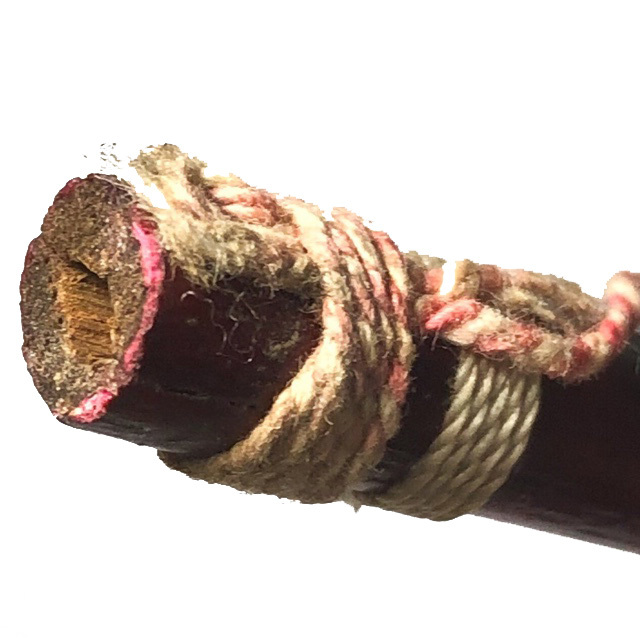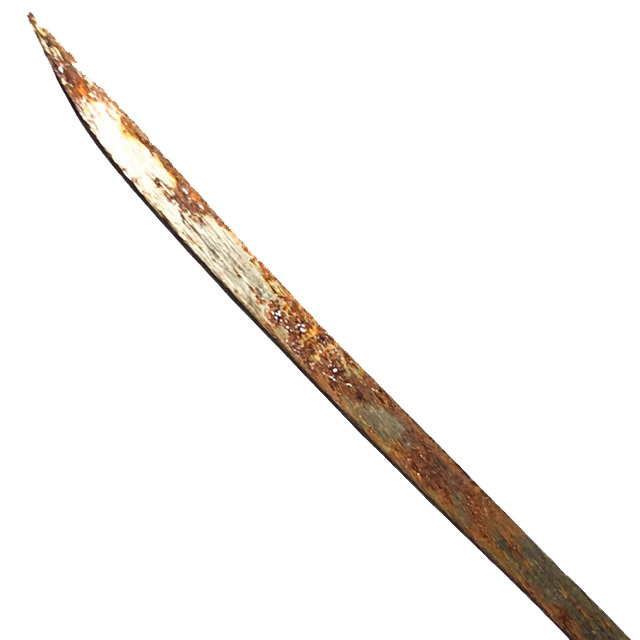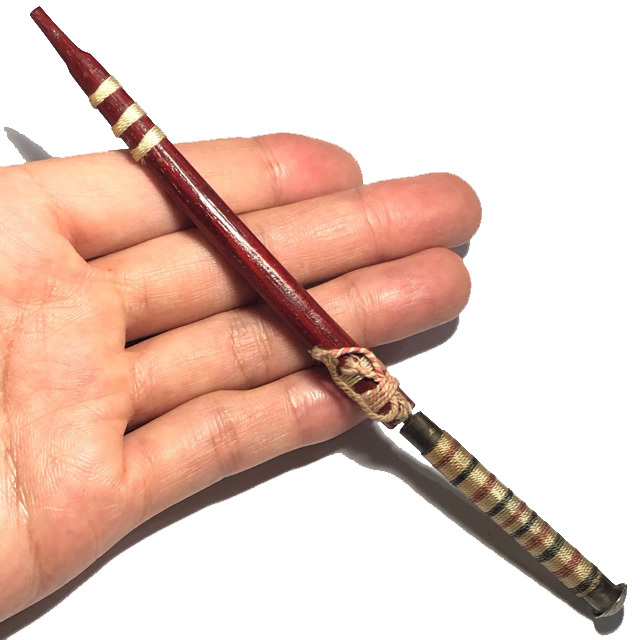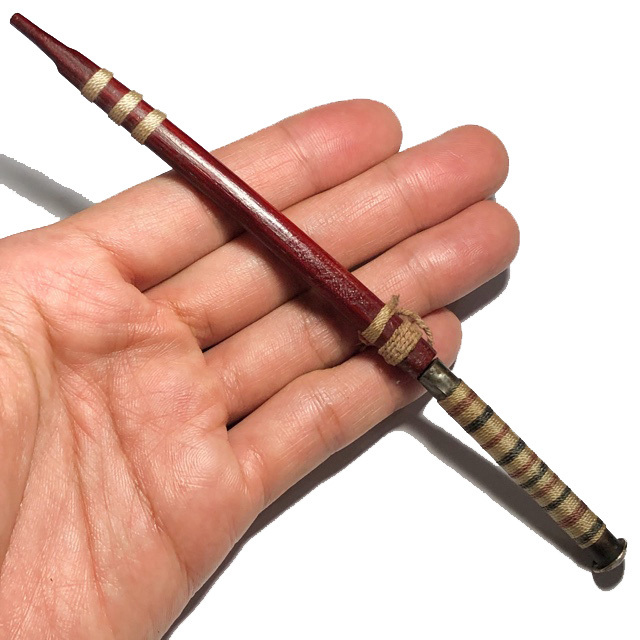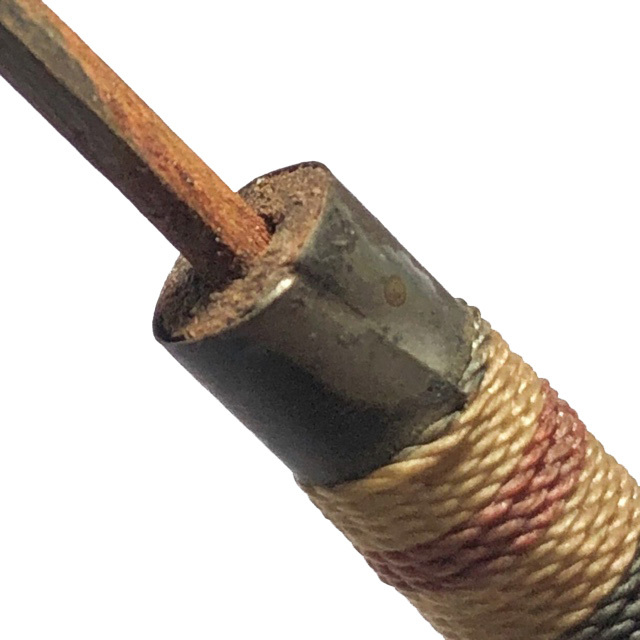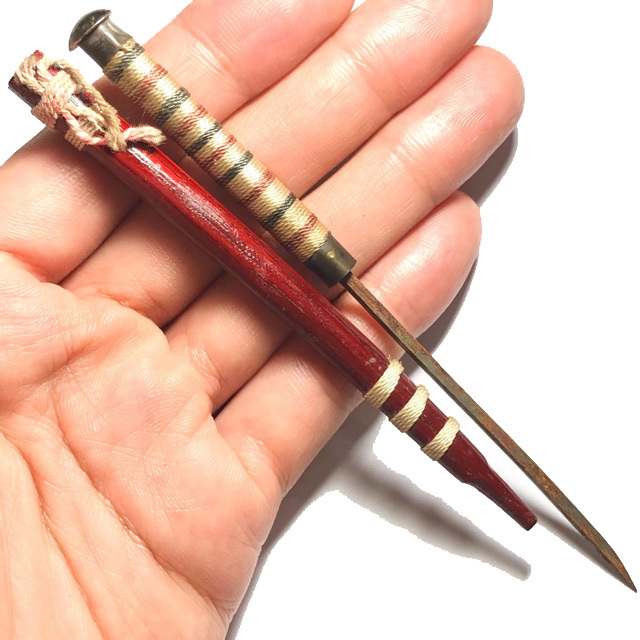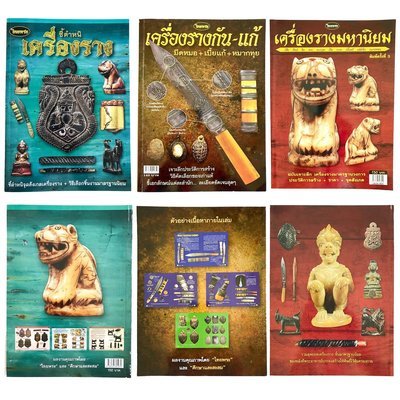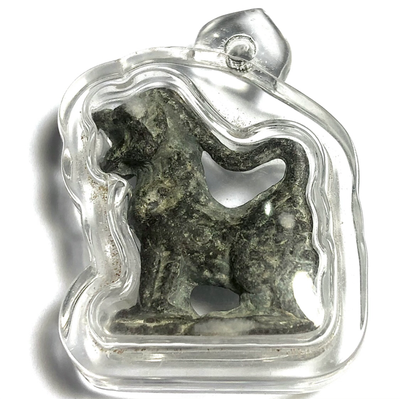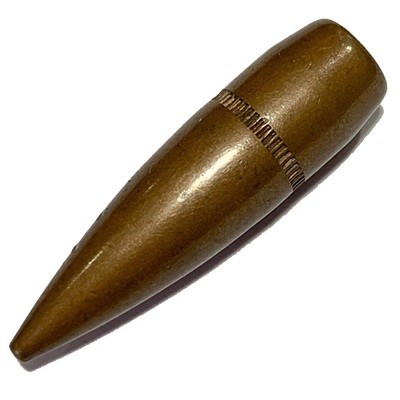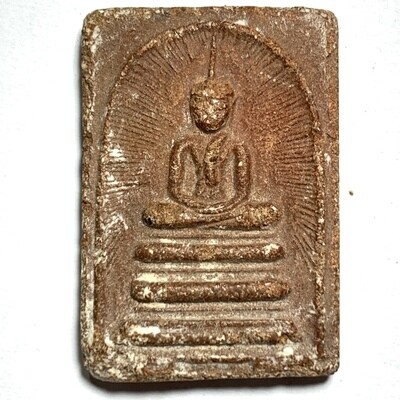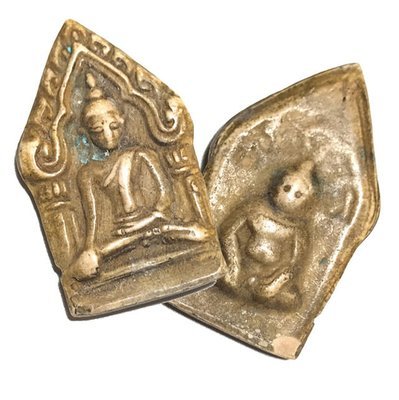Presenting a tiny but powerful and rare classic amulet from one of the Great Khao Or Masters of the 20th Century, Rian Glom Lek Hlang Chedi 2505 BE Nuea Tong Daeng Miniature Guru Monk Coin Por Tan Klai Wajasit
This Sacred amulet of the Great Khao Or Master of Nakorn Sri Tammarat, Master of Wat San Khan and Wat Pratat Noi, is a very rare amulet from Por Tan Klai’s 2505 BE Blessing Ceremony Edition, and is considered a ‘Jaek mae Krua’ type amulet (meaning ‘give to the kitchen maids and temple helpers’), which is suitable not only for men, but due to its miniature size, a perfect amulet for ladies or children to wear.

Rian Glom Lek 2505 BE Por Tan Klai Wajasit Wat Suan Khan
The 2505 BE edition of amulets of Por Tan Klai, is a highly preferred edition, which saw his famous ‘Rian Glom’ round Monk coin amulet with Chakra released, The Rian Glom Lek Hlang Chedi, and the Roop Tai Por Tan Klai Guru Monk Blesséd Photographamulets such as look om chan hmak and ya sen tobacco balls, and sacred powder amulets of various models.
A very rare and highly prized amulet for the devotees of Por Tan Klai to associate with his image and pray to him with a blessed image of the Guru, and the Chedi Relic Stupa on rear face for Buddhanussati and Marananussati. A powerful and Sacred amulet which has passed through the hands of the Guru and been blessed by him.
Por Tan Klai was one of the Top Guru Master Monks of the Last Century, and is considered one of the Four Great Masters of the Previous Generation of Lineage Masters of the Khao Or Southern Sorcery Lineage.
Kata Bucha Por Tan Klai
Meet Daab Lek Akom Sorcerorous War Sword Thai Flag Sinjana Cord spellbound wrapped sheath 6 Inches Luang Por Tob
The Meed Dab Lek Akom Mad Chueak Trairongs, Red White and Blue spellbound cord wrapped miniature war sword is one of the rarer and hardly encountered ritual instruments of the great LP Tob, and a historically important Bucha Item being a miniature Thai war sword of the Ayuttaya style. An extremely powerful Anti Black Magick Talismanic Charm, and Magically endowed ritual object for authentic sorcerors; the Meed Dab Lek Luang Por Tob, of Wat Chon Daen (Wat Chang Phueak). the Meed Daab Lek Sri Ganchai miniature sword for Ritual Magic, and Protection against Black Magic, performing blessings, inscriptions and making holy prayer water.
Below; an ancient Thai Warrior Sword.
The Meed Dab Lek Akom is also powerful as a magical tool for sorcerers to perform ritual magic, make holy prayer water, bestow blessings (and for those of the dark arts, curses), as well as to exorcise or banish ghosts and demons, or to bind them to do your bidding.
Free Registered Airmail Shipping Worldwide is offered with this item. Luang Por Tob Tamma Banyō, or, ‘Pra Kroo Pichit Pacharājarn, of Wat Chon Daen, also known as Wat Chang Phueak, or, ‘the Temple of the White Elephant’, in Pechaburn, was a Nationally and Internationally famous Gaeji Ajarn Buddhist Master, renowned for his merits in building important and highly required edifices for various Buddhist Temples and for the Sangha in general around the whole province of Petchaburn.
Luang Por Tob was born on third of March 2424 BE, and was the son of Mr Phueak Muang Dee, and Mrs Intr Muang Dee. His family were relatively comfortable and did not go without or suffer to any extent.
His parents gave him the name ’Tob’. When the young Tob reached the age of 16, he was taken to the temple of Wat Chang Phueak to place under the tutelage and care of Pra Ajarn Sī by his parents, to ordain as a Samanera Novice Monk. After his Ordination, Luang Por Tob studied the Dhamma Vinaya and Wityākom Occult Sciences to a highly advanced level.
In the year 2445 BE, he reached the age of 21, and was ordained as a fully fledged adult Bhikkhu in the Buddha Sasanā, at Wat Silāmōng. Pra Kroo Mueang was his Upachāya, and Pra Ajarn Parn as his Pra Gammawājājārn, and Pra Ajarn Si as his Pra Anusāwanājārn.
He was given the Ordained name of ’Tammabanyõ’, which means ‘He who has Great Knowledge in Dhamma’. After his ordination as a Bhikkhu, he traveled to practice Vipassanā Kammathān and Buddha Magic (Wityākom/Wicha) with Pra Ajarn Parn, and once more excelled to the point of reaching adept mastery of the various Wicha taught to him by Pra Ajarn Parn. After completing his studies of Wicha with Pra Ajarn Parn.
Luang Por Tob then went on Tudong forest wandering, to practice solitude and develop his Kammathāna practice. During the time he spent on Tudong, he met many great Masters, and learned their Magical Wicha.
During the times of Tudong, Luang Por Tob met and became very close friends with the great Luang Por Khien Tamma Ragkhidto, who was one of the Great Famous Masters of the Petchaburn Province in that Era. Luang Por Tob and Luang Por Khien became very close friends and companions.
Luang Por Tob, made merits building temples, Sala Bprian Dhamma Halls, Uposatha Shrine Rooms for temples in need, and restored many shrines, buildings and delapidated temple facilities scattered around the province.
He made countless merits both with worldly acts, and with the spiritual teachings of the Buddha-Dhamma, and the memory of his great deeds remains in the minds of the devotees to this day, and has passed into the living memory of the current generation of Devotees. When Luang Por Tob went on Tudong to the municipality of Chon Daen, and stayed in the forest close to the locality, the local Buddhist Folk of Chon Daen came to pay reverence, and asked Luang Por Tob to build the temple of Wat pra Puttabat Khao Noi, which was at the time was only a small Samnak Songk Sangha station in the forest.
Luang Por Tob accepted and built Kuti Hut dormitories for the Monks, an Uposatha Shrine Room, a Sala Bprian, and improved the facilities of the temple, transforming it into a large and popular temple for the local community, which was then raised in official status from the status of ’Samnak Songk’ and registered as a ‘Wat’ (fully fledged Temple).
In the year 2490, Luang Por Tob was promoted in status to be awarded the status of Upachaya Monk (ordaining officer). In 2497 BE, he recieved the Royal decree of elevated status of ‘Pra Kroo Sanyabadtr. He was given the new name of Pra Kroo Wichit Pacharājārn
Luang Por Tob passed away on the 14th of March 2519 BE, on the fourth phase of the fourth lunar month, at the age of 95 years old, after 75 years of ordained life. The current abbot of Wat Chang Phueak (Wat Chon Daen), Pra Kroo Wimol Pacharagij, who is a direct transmission lineage Looksit of Luang Por Tob, says that Luang Por Tob had given instructions before his death, that his body should not be cremated, because one day in the future, his body would become of use to the temple in some way.
So after his death, the Looksit of Luang Por Tob took his body, and placed it inside a glass coffin. The provincial offices then built a Roop Muean statue of Luang Por Tob, and a shrine area for its placement, so that Devotees could worship Luang Por Tob’s image and his Relics.
In the present Era, Wat Chang Phueak (Wat Chon Daen) is a place where Buddhists from around South-East Asia and the rest of the World come in Pilgramage and to sight-see. Hundreds and Thousands of devotees visit the temple every day to pay reverence to the relics of Luang Por Tob, and beseech his blessings. Luang Por Tob’s body has not deteriorated, and has calcified to become stone over the years, and remains in the same condition as it was when he was first placed into the glass coffin.
Each year, the temple performs a ritual to change his robes. The used robes which are removed, are cut up into pieces and given to the Devotees to use as articles of Faith, Good Fortune and Protection of the Blessings of Luang Por Tob.
The amulets of Luang Por Tob are amongst the most highly preferred of any master, with his Roop Lor Hnaa Farang, and the Rian Dode Rom Parachute coin, and Rian Paetch Rab coin being the most highly sought after amulets in his image, and his Takrut Tone spells being the most highly preferred of his Talismanic ‘Krueang Rang’ type amulets
Wadthumongkol - the Amulets of Luang Por Tob
As far as amulets are concerned, Luang Por Tob excelled in this Wicha, and created more than 200 different kinds of amulets during his trajectory as a Sorceror Monk, including Muan Sarn Sacred Powders amulets, Roop Lor Loi Ongk Statuettes, Takrut and other amulets. So many of his amulets have become world famous classics and highly renowned for their magical power. His famous Roop Lor Hnaa Farang, Roop Lor Hua Mai Kheed, and Roop Lor Awk Sir are immensely sought after by collectors and devotees of the amulet appreciation societies, and fetch very high prices these days.
Below; the biography of Luang Phu Khui (now deceased), first apprentice to Luang Por Tob, and inheritor of the Wicha Luang Por Tob, with lineage succession history
His charms and Talismans are legendary for their power of Kong Grapan Chadtri, Klaew Klaad, and Maha Ud Magic. His Takrut Tone Tak Daay Cord-Bound Yantra scroll spells are the most highly sought after amulets in the ’Sian Pra’ amulet collector societies, and carry heavy prices to them, and are immensely rare to find.
